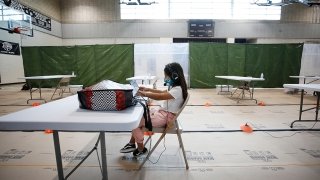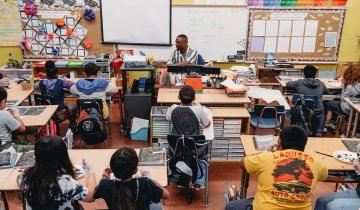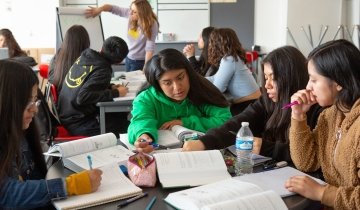As we go to press, COVID-19 has infected 3.5 million Californians. On a more profound scale, due to our state’s sheer size and deep income inequality, the pandemic has shuttered businesses, triggered mass evictions, thrown millions into unemployment and forced teachers and families to rely on virtual instruction. California’s governor, its teachers unions and the massive Los Angeles Unified School District—80 percent of whose students live in poverty—struggled to agree on when to reopen schools safely.
The pressure to reopen has been great, and not only due to economic urgency. Although schools tried valiantly to keep students connected to learning, millions of kids have had limited access to online classes. USC Rossier Professor Stephen J. Aguilar’s research in Los Angeles County found that close to a third of students fall into this category. It’s not surprising that a recent study from Policy Analysis for California Education found substantial evidence of learning loss among low-income students. Inequities in educational opportunity that were pervasive before the pandemic have been exacerbated.
As vaccines are rolled out, political agreements are forged, plans activated and schools reopened, how will we address these impacts? And is there any chance that schools can perform better than before— for all students, equally?
Hugh Vazquez of the National Equity Project writes, “Disturbance is required for change and there is no doubt that disturbance is happening … the question is, are we willing to use this opportunity to create the kind of educational system we want? … To change a system, we … first have to SEE what the system is producing, then we have to ENGAGE with others to design something different, and finally we have to ACT.”
When we do look closely and “see” our educational system, it’s clear we can do better. We can provide students with an education that expands opportunity, builds character and inspires them to excel. If we invite teachers to prioritize their relationships with students—to get kids excited about learning by tapping into their natural curiosity—and if we work together, across political differences, to ensure that schools have the resources to support all students, we can create the schools we need for a better, more equitable future.
In this issue, you will read about USC Rossier initiatives designed to do just that—our New Vision for Schools. Our faculty, alumni and students “see” the system in question. Together with teachers, counselors, administrators and families on the front lines of the educational challenges in this country, we are ready to devise innovative, aggressive, permanent strategies for change.
Fight On!






